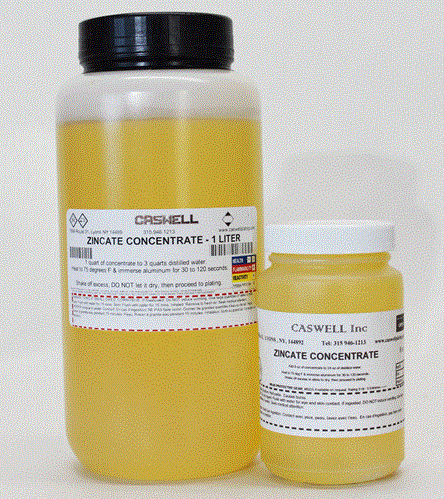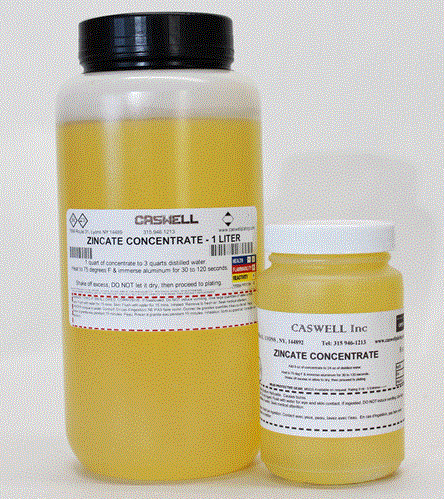You Can't Plate Aluminum Without Zincate Pre-Treatment For Aluminum
Using CASWELL Zincate Solution, aluminum can be pre-treated, and then plated in one of our plating kits. The problem is that aluminum forms an oxide layer the minute it is exposed to air. This presents a problem when plating aluminum, as the oxide layer prevents the plate from sticking. By using the Zincate process as a pre-plate dip, we chemically remove the oxide layer and at the same time, apply a layer of zinc. The zinc protects the aluminum until it is ready to be plated. As the part is lowered into the plating tank, the zinc is etched away by the plating solution and plating proceeds onto a clinically clean surface.
The process:
- Thoroughly degrease the part in either CASWELL SP Degreaser or a detergent based cleaner.
- Bead blast the part to remove all heavy oxides and contaminants (optional)
- Buff & polish the part to the required shine.
- Thoroughly degrease the part in either CASWELL SP Degreaser or a detergent based cleaner.
- Make up the zincate solution by adding 1 quart of concentrate to 3 quarts of distilled water.
- Heat the solution to 75°F. Immerse the solution for 15 sec. to 2 minutes. Immersion time will depend on the alloy, zincate condition and temperature.
- If the alloy reacts violently with the solution, then shorten the time immersed. If no reaction is visible, then immersion times can be extended.
A uniform gray appearance is usually a sign of a properly zincated surface, however there are cases where a dark, slightly streaked surface is acceptable. As the zincate solution is depleted, there will be a noticeable increase in the gassing. You can replenish the solution by adding about 10% of the Zincate Concentrate, or simply make up a new batch.
Rinse the part and prepare for plating. You can plate a zincated part directly with Nickel, but this will eventually contaminate the nickel bath with zinc. We recommend plating first with Flash Copper, then Nickel.
Brush Plating Aluminum
Because Brush Plating exposes the part to the atmosphere, it is virtually impossible to Zincate an aluminum part, then brush plate onto the Zincate. When the brush is applied, the zincate is removed, exposing the part to air, which oxidizes it and prevents plating from sticking. We suggest the part is Zincated then Flash Copper plated, then it may be brush plated with almost any other finish.



